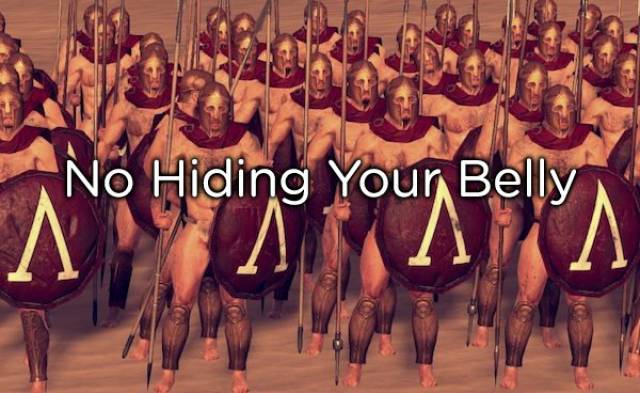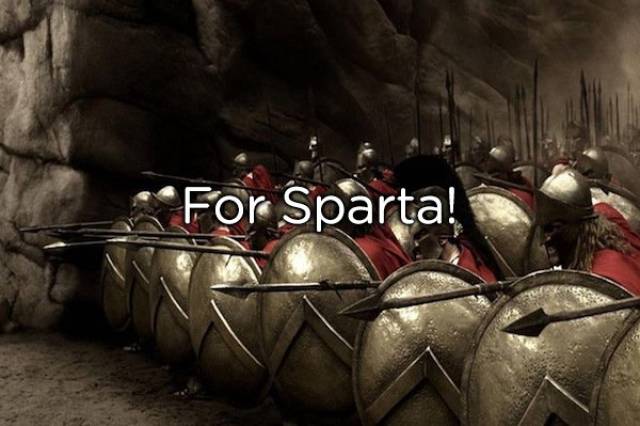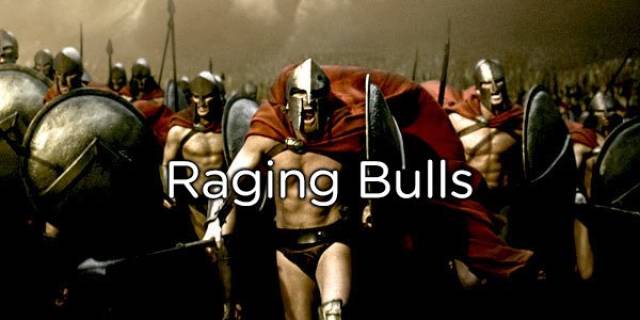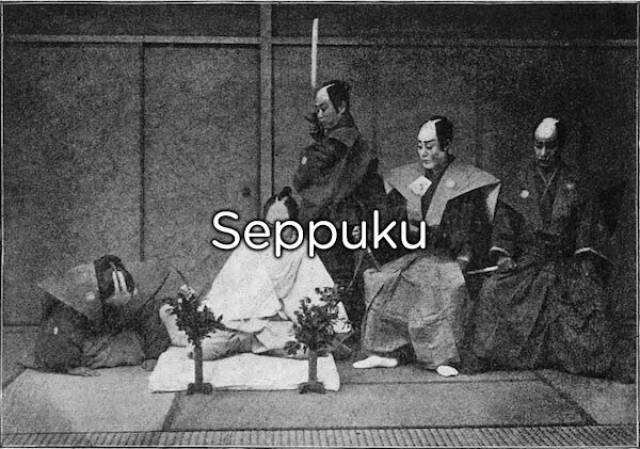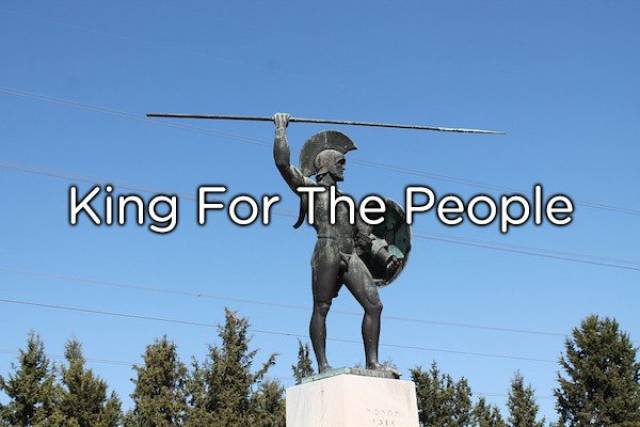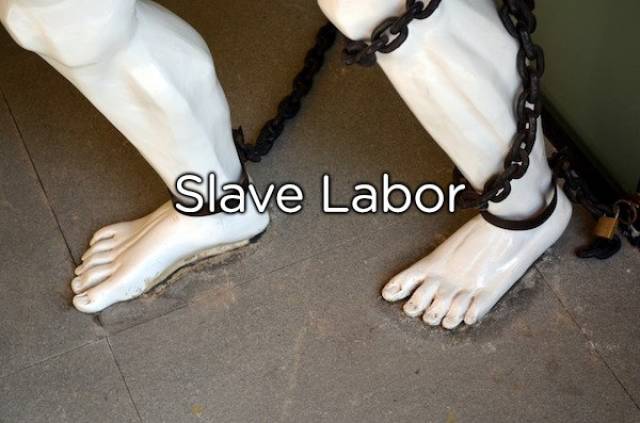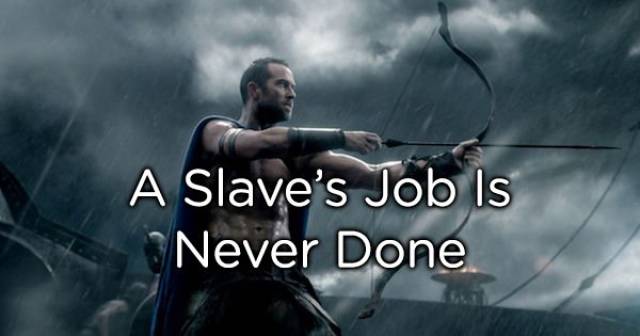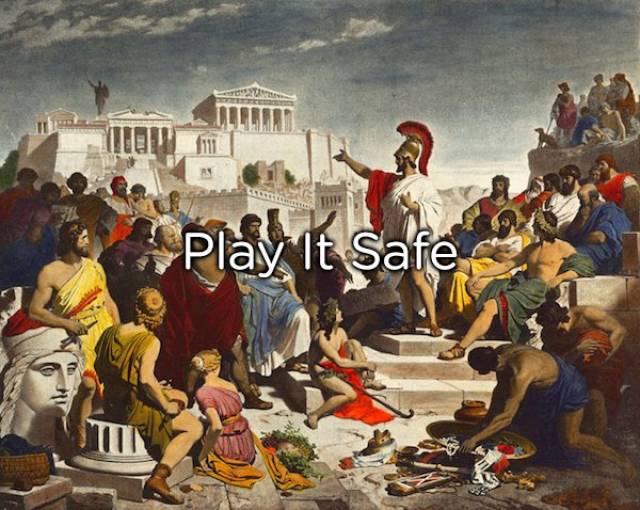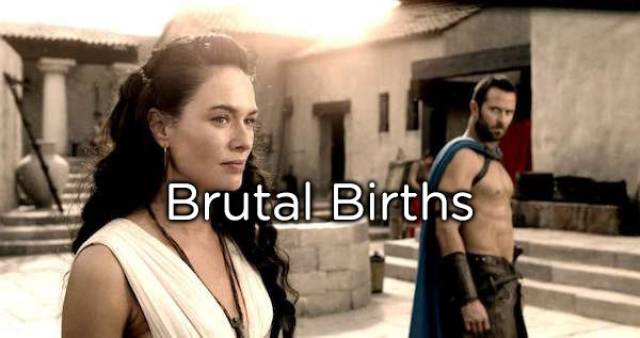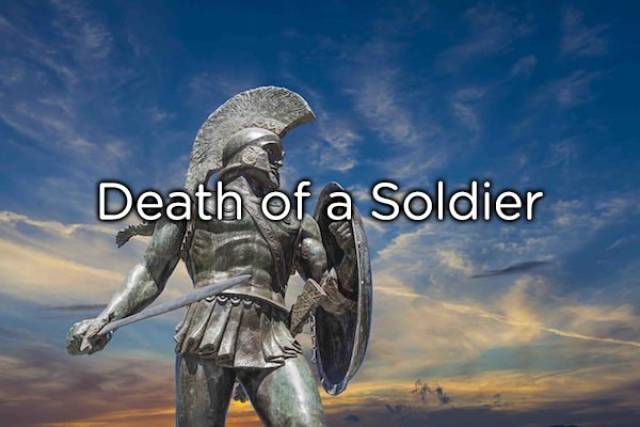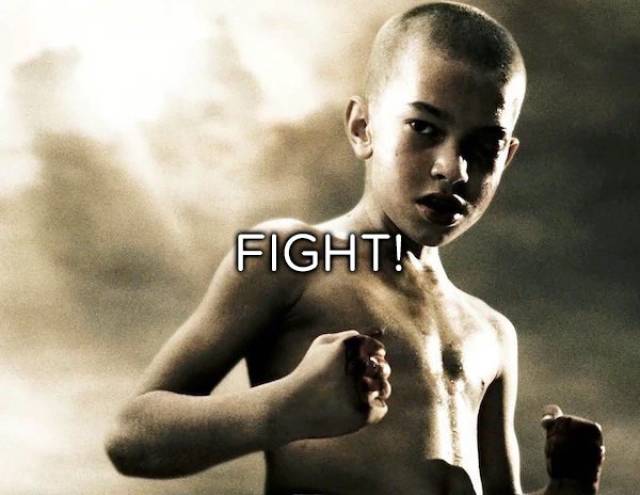In the fourth century, as he was campaigning against Greek city-states, Philip II sent a message to Sparta that read, “You are advised to submit without further delay, for if I bring my army into your land, I will destroy your farms, slay your people, and raze your city.”
The Spartans replied with, “IF.” Philip never attacked Sparta.
All Spartan citizens were expected to be professional soldiers. Children were removed from their homes at the age of seven to begin training.
Spartans had strict fitness standards. Every ten days, the young men would be lined up naked and inspected. Those who didn’t pass were beaten and censured.
At the famous Battle of Thermopylae, Spartans continued to fight after losing their weapons, resorting to biting and scratching in order to achieve victory.
Shields were held with very high significance. A soldier who lost his shield would be severely punished. This was due to the fact shields were for the entire army’s protection, not just the individuals.
The crimson cloaks they wore were meant to show pride in the women of their community, as well as to strike fear into their enemies.
The Spartan’s main weapon, the dory spear, was 7 – 9 feet long with an iron spearhead and bronze butt-spike for balance.
Like Samurai, Spartans were expected to kill themselves rather than surrendering.
A married Spartan woman without a child could be ordered by the government to have sex with another man who might better be able to impregnate her.
Spartan kings were held to the same standards and laws as the rest of the community.
Spartans employed slaves called “helots” who took care of any duties which might take the Spartans away from their military obligations. These Helots usually came by way of conquered Greeks.
Spartans had a secret police for keeping the Helots in line called the Krypteia. They would kill any Helot found outside the city at night or those who looked too strong and fit during the day while working.
Helots were also hunted as part of Spartan training.
Sparta had two kings. This came about when twin son heirs were born and formed the bloodlines for the two royal houses, Agiad and Eurypontid.
The two bloodlines allowed one king to travel with the army into battle, while the other remained in Sparta to rule.
Leonidas has gotten most of the attention thanks to Frank Miller’s ‘300,’ but the other king at the time was Leotychidas.
Spartan women also underwent rigorous physical training, but in their case it was to make it through the rigors of Spartan childbirth.
The only Spartans given headstones after death, were soldiers killed in battle and women who died in child birth.
All infants were thoroughly inspected. If any defects were found they were left to die.
Spartan boys would be whipped for an entire day, making sport of seeing who could take the most lashes.
Spartan boys were expected to be able to survive in the wilderness by themselves by the age of 12.
Boys were encouraged to fight and at times, older men and teachers would deliberately cause fights between the boys.



